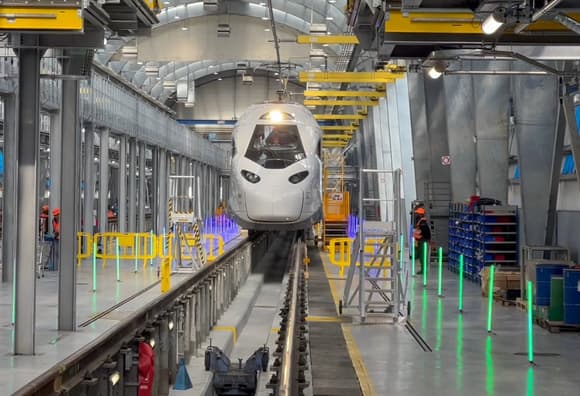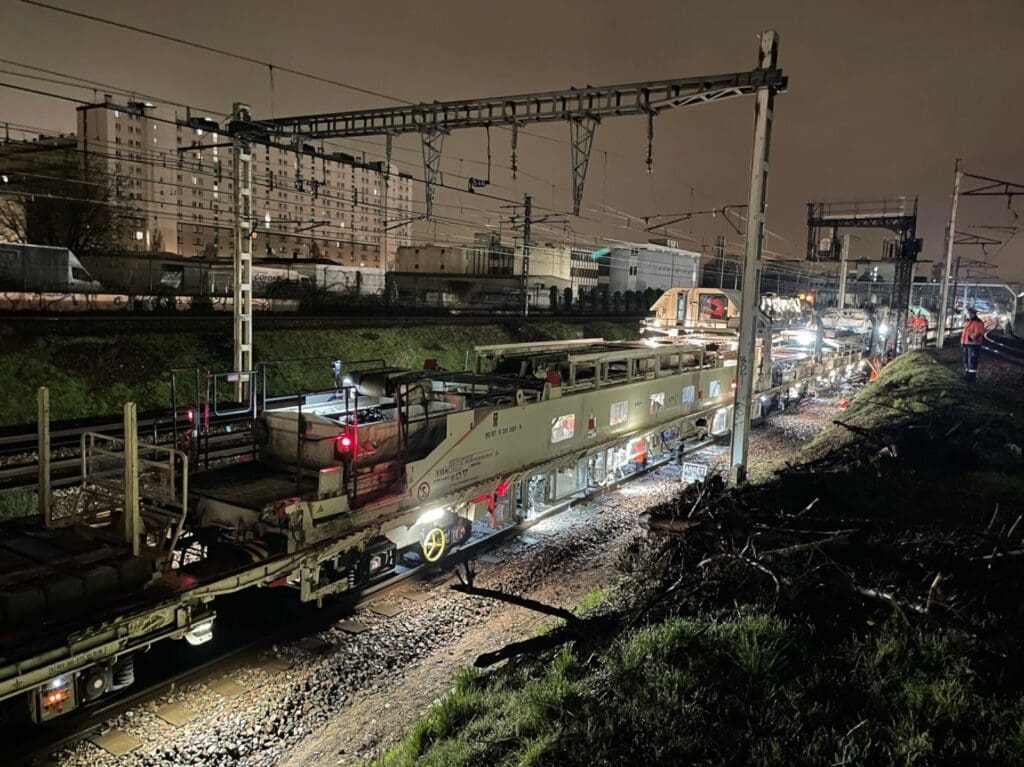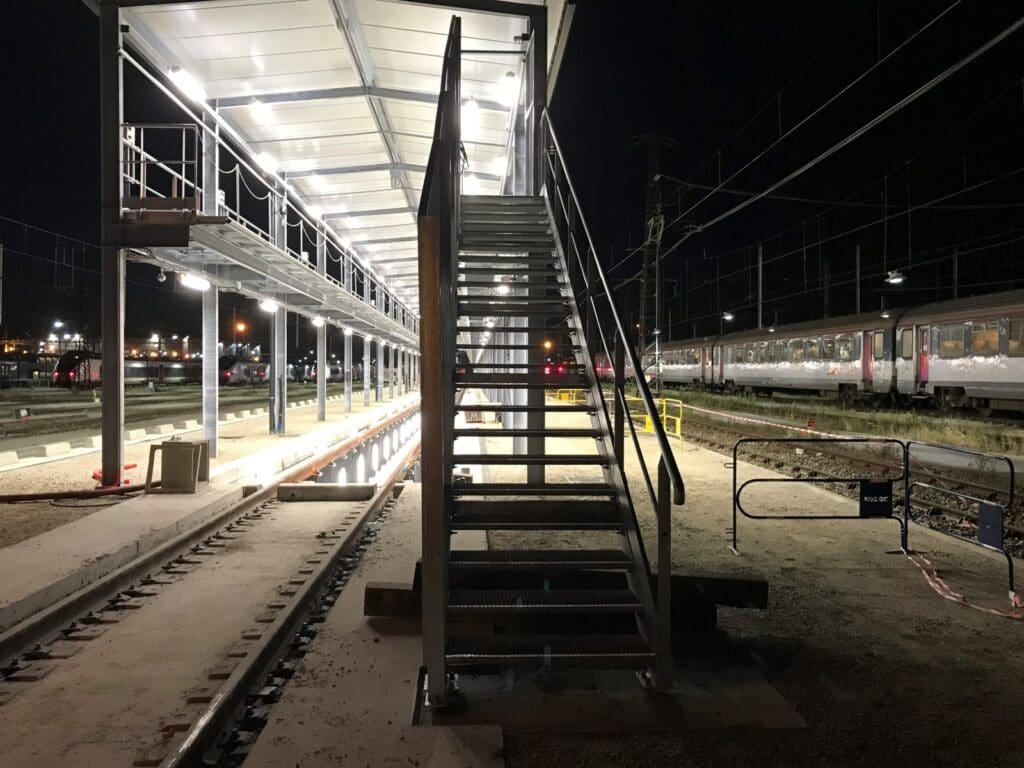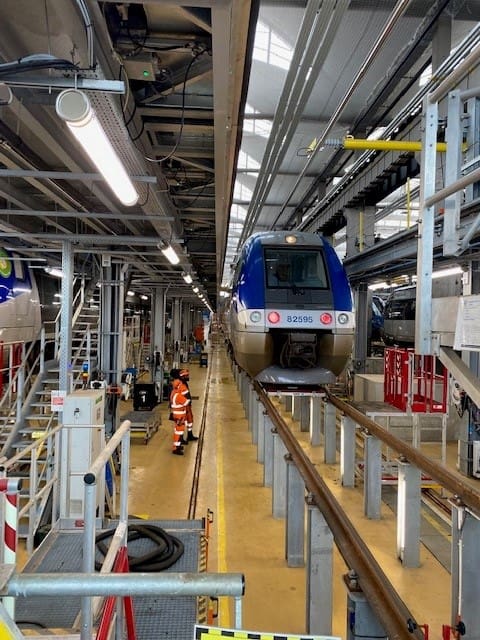Lighting at the TSEE Technicentre redesigned and modernised to accommodate the TGV M
The Technicentre Sud Est Européen (TSEE), one of the SNCF’s main TGV maintenance centres, has been completely redesigned and modernized to accommodate the TGV M, the latest high-speed train. The lighting of the technicentre was entrusted to the Sammode group, specialists in lighting for industrial and extreme environments. Here’s an overview.
TGV M: French excellence from its design to its luminaires

The latest generation of TGVs, dubbed TGV M (for TGV Modulable), is due to go into service in 2025. These largely reinvented TGVs have undergone a series of tests in recent weeks, notably at Marseille train station. The developments of the TGV M involve verifying the compatibility with existing installations, as “all TGV operating processes need to be adapted“, according to Alstom, its manufacturer.
Among the major differences in this new version of the TGV, the number of passenger cars has been increased from 8 to 9, with the aim of transporting more passengers (around a hundred more) while reducing power consumption. More aerodynamic, the TGV M consumes 20% less electricity than previous generations, and emits 32% less CO2. All this is achieved with 97% recyclable materials.
In due course, 115 TGV M trains are to be put into service by the SNCF, for an estimated investment of 3.5 billion euros. Logically, most of the TGV M fleet will be deployed between Paris and the South-East, notably Lyon, Nice and Marseille. These new TGVs are a concentrate of technology and should also enhance on-board comfort, with 5G connections and lighting adapted to the light outside.
TSEE Technicentre: an innovative rail maintenance centre with modernised lighting
The first maintenance centre dedicated to TGVs since 1981, the TSEE technicentre (850 employees) has undergone a major facelift in recent months to modernize and adapt to the specific features of the TGV M. All maintenance facilities had to be adapted “to make them compatible with the future train“, said the SNCF in a press release. Among the adaptations, new LED lighting fixtures have been installed for the maintenance workshop gangways (Pascal luminaires), as well as for the inspection pits (Niepce luminaires optimized for the pits).
One of the key innovations in the modernisation of the TSEE technical centre, which maintains a quarter of the SNCF’s TGV high-speed trains, has been the installation of automated test benches enabling several hundred parts to be checked in a matter of seconds. The investment, which will total 300 million euros between now and 2027, should make the TSEE technical centre the benchmark for the railway company’s new maintenance standards.

The work, carried out in partnership with Alstom, should make it easier to maintain the TGV M, the first communicating train, “which will provide permanent remote access to technical data and clear information on the state of health of each of its components“, the SNCF has stated. This technology should make it possible to anticipate breakdowns in doors, air conditioning and other operating systems before they disrupt traffic.
Sammode, lighting partner for the TSEE technical centre

The lighting of the maintenance centre, which had to be robust and durable, not least because of the difficulty of access to certain areas, but also to guarantee optimum visibility for operators, was entrusted to the French group Sammode, specialists in lighting for industrial and extreme environments (vibrations, shocks, corrosion, dust, projections…).
Sammode, a long-standing partner of the SNCF for lighting railway maintenance workshops, inspection pits, warehouses, storage areas and tunnels, offers high-performance LED lighting solutions tailored to the specific constraints of the railway industry.
“Because of the varying heights and the need for appropriate lighting from all angles, but also because the workshops are subject to chemical aggression (oil) and water splashes, it is essential to install heavy-duty luminaires. The lighting must also be able to withstand the electrical disturbances inherent in areas where large machines are used“, explains the Sammode group on its website.





